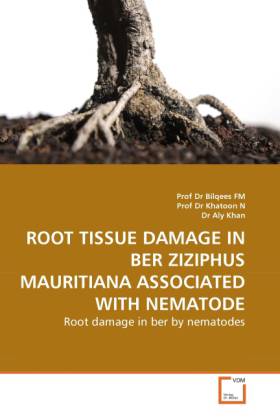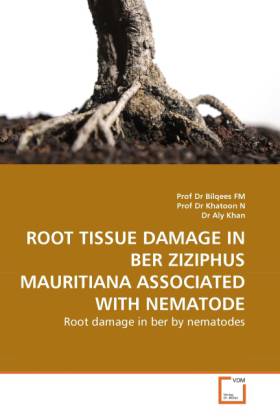
- Afhalen na 1 uur in een winkel met voorraad
- Gratis thuislevering in België vanaf € 30
- Ruim aanbod met 7 miljoen producten
- Afhalen na 1 uur in een winkel met voorraad
- Gratis thuislevering in België vanaf € 30
- Ruim aanbod met 7 miljoen producten
Zoeken
Omschrijving
Root tissue damage by endoparasitic nematodes in ber root is described here based on original research. Grossly the infected roots appear swollen and black in colour as compared to healthy roots. Sections of infected roots show great variation in the cell size, some cells were enlarged with broken walls while others were hypertrophied due to large egg masses and sections of larvae in them. Increase in the number of cells and formation of giant cells was a common finding. Epidermis and endodermis as well as dermal regions were affected. Syncytial formation in cortical region was the most pronounced response to nematode infection. Large number of necrotic cells were also observed. Cells were heavily parasitized by female nematode and larvae. Infested ber roots exhibit great damage associated with poor root growth including stunting, yellowing and tendering specially in young trees. This information is useful to plant pathologists, students and teachers involved in this field of research and fruit growers.
Specificaties
Betrokkenen
- Auteur(s):
- Uitgeverij:
Inhoud
- Aantal bladzijden:
- 168
- Taal:
- Engels
Eigenschappen
- Productcode (EAN):
- 9783639288599
- Verschijningsdatum:
- 25/08/2010
- Uitvoering:
- Paperback
- Formaat:
- Trade paperback (VS)
- Afmetingen:
- 152 mm x 229 mm
- Gewicht:
- 254 g

Alleen bij Standaard Boekhandel
+ 134 punten op je klantenkaart van Standaard Boekhandel
Beoordelingen
We publiceren alleen reviews die voldoen aan de voorwaarden voor reviews. Bekijk onze voorwaarden voor reviews.











